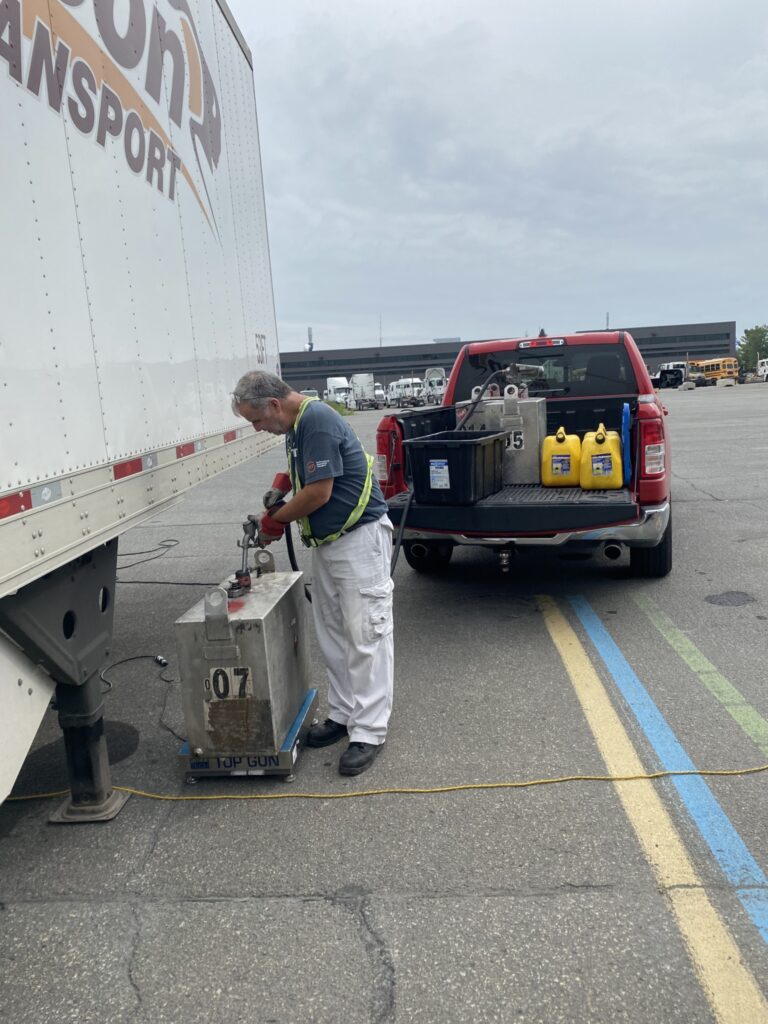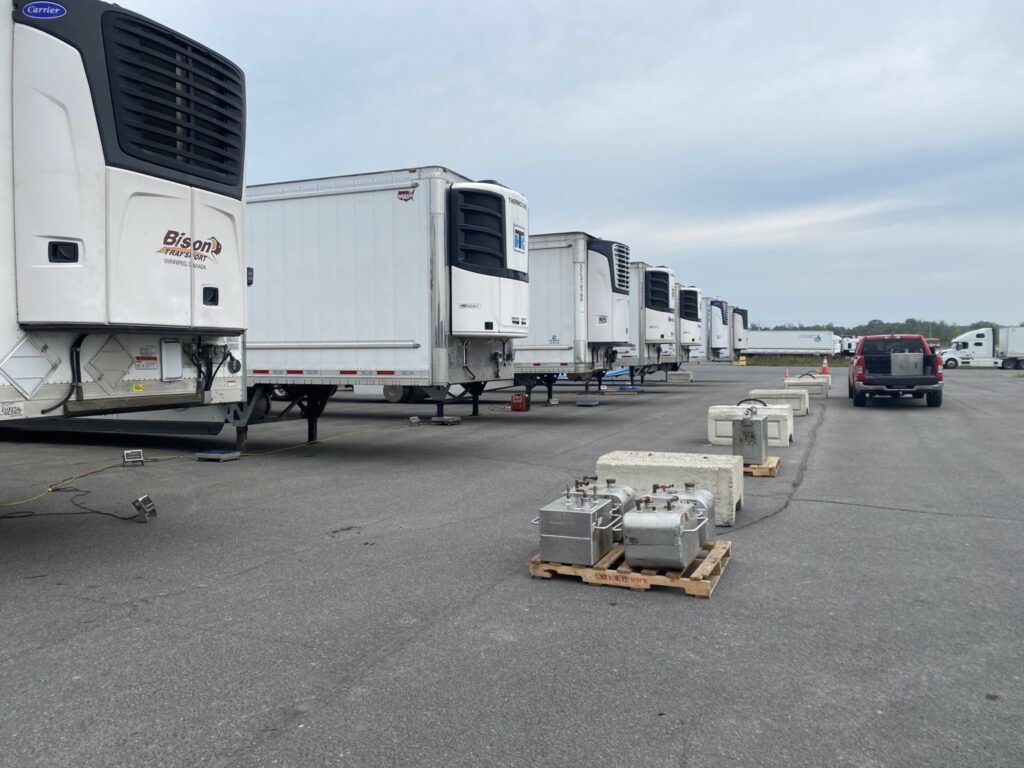PIT Group studies the efficiency of refrigerated trailers and reefer units
Lined up side by side in a large courtyard of the Centre de formation en transport routier de Saint-Jérôme, eight refrigerated trailers are buzzing with technicians and researchers from PIT Group. This year, PIT Group members asked the research group to conduct tests on refrigeration equipment.
The tests took place over five days in August, and in several parts, explained Marc Trudeau, member relations and business development manager.
“In the last year, a lot of new products have come on the market. All of the trailers here are new 2021 models, except for one that is from the 2017 model year. It will be used to compare the degradation that appears over the years,” he said.
“First, we’re going to try to understand new insulation, thermal bridges, door sealing, anything that can affect refrigeration quality.”
Each trailer is equipped with 13 sensors strategically positioned throughout the trailer. This ensures that airflow will be measured and all temperature variations will be recorded.
“We’ll be able to see if it’s optimal everywhere. Detect if there are more sensitive areas. Determine how long it takes to cool the front and the back, among other things,” explained Trudeau.
A scale and a portable tank are assigned to each trailer. Hoses connect the refrigeration units to the tanks. This is the best way to calculate the fuel consumption of each refrigeration unit.
The trailers being tested are empty. It was unthinkable to do the tests with loaded trailers for various reasons, such as the fact that the study took place over a full week. It would also have been necessary to ensure that the trailers all contained the same products, that they were placed in the same location, and these products would have not necessarily been representative of the type of cargo carried by PIT Group members.

The trailers
The first test is to check for heat loss. The temperature in the trailers was lowered to -23 degrees Celsius. Then, all the refrigeration units are stopped at the same time, sensors are used to measure what kind of losses there are and the trailers are compared to each other.
With the second test, researchers want to measure the degradation between two VersaCold trailers, one new and one five years old.
“Is there really a noticeable difference after five years?” asked Trudeau. “History tells us that after 10 years, the degradation starts to be major. This is a big problem here in Canada because the cold chain does not require inspection of refrigeration units and trailers. In Europe, by contrast, regulations require an insulation test after five years, and then every two years thereafter.
“We’ve also found that trailers gain a lot of weight over time due to water seepage and moisture build-up in the walls and insulation. We’ve seen trailers that weighed 2,000 lb. more because the insulation was filled with water.”
Some manufacturers have maintained traditional manufacturing methods, but many have turned to composite materials to increase the insulation value of trailers. The question is, what are the implications for fleets? It may not be worth keeping refrigerated trailers for 15 years. Maybe it’s better to replace them sooner, or invest a little more in a higher-end model. Those are the kinds of answers fleets would like to have.
“We have all the spec’s on all the trailers and, with the sensors, we can tell if it’s really worth investing more in the ceiling, the floor, the front, the back of the trailer.”

Refrigeration units
Another set of tests looks at refrigeration units. “The industry tells us that refrigeration units are typically set at -23 degrees Celsius for frozen products, and 2 C for fresh products. So, we do our testing at those temperatures,” Trudeau said.
PIT Group has assembled the most popular refrigeration unit models in the industry. An X4 7300, X4 7500 and Vector 8500 from Carrier, and Precedent C600 and C600M (for multi-temperature) from Thermo King.
The multi-temperature models are more versatile and can transport both fresh and frozen products at the same time. Single-temperature units are more often found in fleets that have long-distance contracts and involve only pickup and delivery to distribution centers.

When we visited, the PIT Group team was comparing multi-temperature trailers while the temperature was set at -23 C in the front and 2 C in the back. “We’ll open and close the doors to simulate a delivery and, of course, everything is measured and timed to make sure the tests are consistent from trailer to trailer. In particular, we’ll be able to see heat loss and how long it takes for the trailers to return to temperature.”
During these tests, PIT Group not only looks at the fuel consumption of the units, but also at best practices. “They say, for example, that during deliveries, the refrigeration units should be turned off when the doors are opened, because otherwise warm air is drawn in and redistributed throughout the trailer. We are going to test this,” added Trudeau.
Have your say
This is a moderated forum. Comments will no longer be published unless they are accompanied by a first and last name and a verifiable email address. (Today's Trucking will not publish or share the email address.) Profane language and content deemed to be libelous, racist, or threatening in nature will not be published under any circumstances.